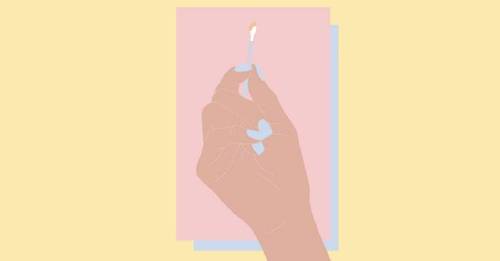Cotton buds are such an underrated beauty tool. Especially when it comes to creating a crisp winged eyeliner or fixing up your nail polish.
But as it turns out, the one thing many of us use them for – removing earwax – is a BIG no no.
Speaking to Duncan Collet-Fenson, Audiologist & MD of Aston Hearing and Specsavers Chief Audiologist, Gordon Harrison, both experts agree that even if you’re super careful, you shouldn’t be shoving anything in your ear, no matter how bad your wax build-up is.
To understand more about ear wax removal, first, we need to become the ear wax. Here’s everything you need to know about what’s going on inside your ears.

Not everyone’s earwax is the same
There’s a lot of variation when it comes to ear wax. Colour can range from white and yellow to brown and black. And the texture can be soft, hard, flaky or wet.
“Yellow-brown ear wax tends to be wet as it is ‘newer’, while darker and firmer ear wax is typically older”, says Gordon.
But the appearance of ear wax also depends on a person’s diet, ethnicity, age and the environment.
“Ear wax is usually made up of dead skin cells, secretions and waste products, the percentages of which varies between people,” says Duncan. “Earwax is created by the body to help protect vital parts of the ear from water damage, infection, trauma and foreign bodies.”
Those with hearing aids or those who regularly use headphones are likely to have a greater level of wax build-up.
Signs of ear infection or blockage
Odour, pain and leaking fluids are the warning signs you need to be wary of when it comes to your ear wax, rather than change in colour.
“If your ear wax starts to develop a strong odour, this could mean you have an infection or damage in the middle part of your ear, in which case you should visit your doctor,” says Gordon.
Other signs of infection or blockage include; severe pain in one or both of your ears, fluid or drainage, dizziness, loss in hearing or a ringing noise.
“Impacted ear wax can affect the movement of the ear drum or occlude the ear canal, making it difficult for sound to pass through”, says Duncan. “Having too much earwax can cause a range of health problems and earwax impaction affects approximately 6% of the world’s population, 35% of which are over 65 years old.”
So why can’t I just clean my own ears?
Just like the vagina, our ears are actually self-cleaning and at-home ear wax removal can do more harm than good.
“Problems can arise when items, such as cotton buds or ear plugs, are inserted into the ear. This interferes with the ear’s natural cleaning process and pushes wax and debris further into the ear, which can cause build-up or a blockage of the ear canal”, says Gordon.
In fact, the most common cause of excess ear wax is at-home removal.
“Nothing, including cotton buds, should be used to clean excess wax from the ear. It must be done professionally”, says Duncan. “It can be tempting to try and remove the wax yourself but this can cause permanent damage such as hearing loss and a burst or damaged ear drum.”
Ear candles are also off the ‘safe’ list, with both experts saying there’s no real evidence that they remove ear wax build-up.
“They can give the impression that they have removed wax as they produce a yellow waxy deposit, but this is from the candle not the ear”, says Duncan.
Earwax will generally work it’s way out of the ear naturally, and there should be no need for self-cleaning, other than just general showering and hair washing which can help wash the wax away.
Professional ear wax removal
If you have impacted ear wax, your audiologist is likely to recommend the following professional options:
- Microsuction: This procedure involves using a suction device to remove the wax within the ear canal, and the clinician will normally use a microscope to ensure wax is extracted safely. It is generally the most comfortable procedure as the device avoids the ear canal becoming wet.
- Ear irrigation:When warm water is used to wash the loose wax out. This procedure is common practice in the NHS and carried out in some GP practices. However, this method is generally considered to be less comfortable and the client must insert a loosening solution (such as olive oil) within the ear for 7-10 days before the procedure.
- Endoscopic ear wax removal: Involves the use of a curette or micro-suction probe and an endoscope. The endoscope has a camera attached to it so the clinician does not need a fixed microscope.
- Instrumentation wax removal: This technique uses a microscope and delicate instruments to allow the clinician to pick the wax from the ear canal.
- All of the above: Duncan says a combination of above techniques are used to remove wax and debris from most ears, whatever the consistency. Most reputable practitioners use a video otoscope (camera) to provide before and after images and will check the health of the ear canal and ear drum once clear. Procedures can take between 20-45 minutes.



